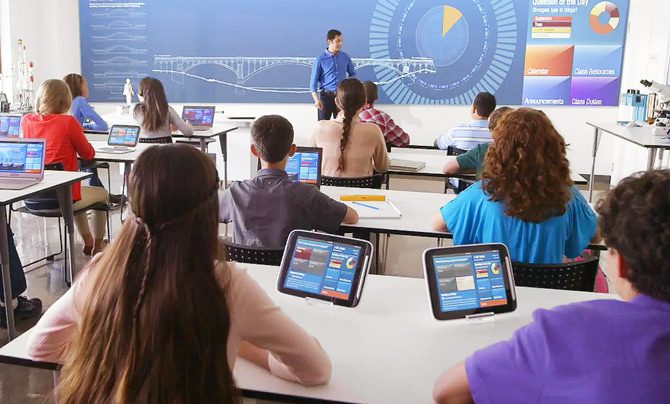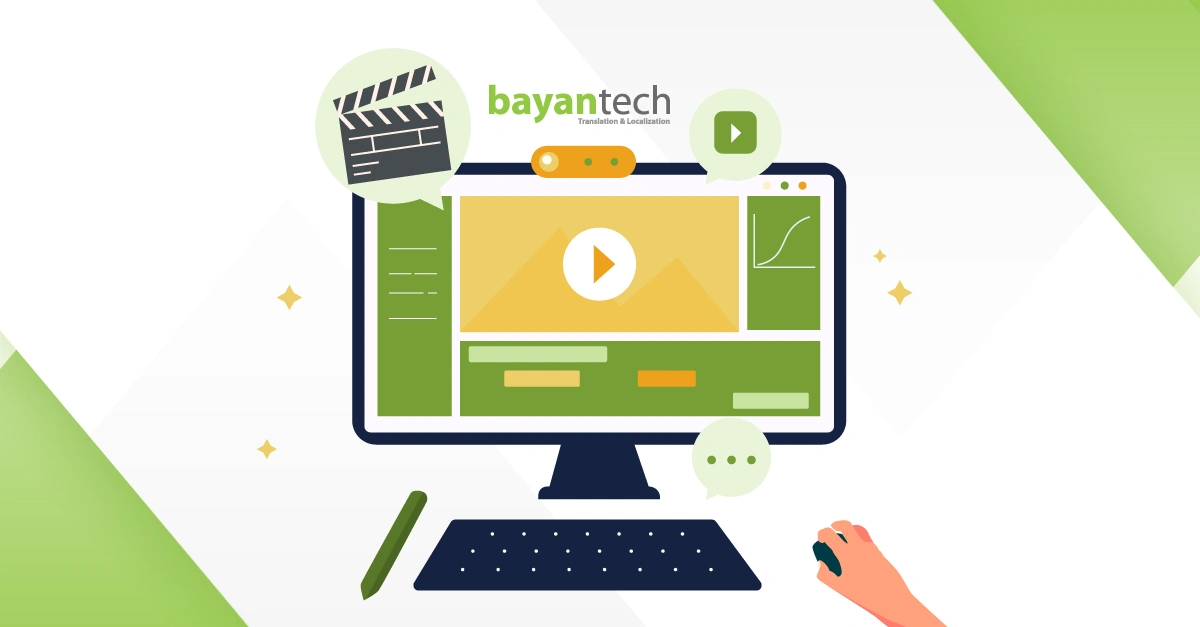With almost everything linked to technology now, teachers feel frustrated and maybe a bit intimidated. To be honest, they have the right to be. It’s undeniable how noble the role of teachers is, but still, traditional ways of teaching are falling out of the modern life that’s greatly dependent on computers and smartphones where eLearning has come into existence.
The 80s and 90s generations might have taken the technology intervention gradually but it’s not the same for the current generation. Being attached to gadgets all day in almost everything creates a gap for young students between everyday life and school life.
For around 20 years, eLearning was experimental, used for merely technical learning by some institutions. But lately, a large number of schools, universities, and even companies and corporates are using eLearning for almost all types of learning.
The spread of eLearning raises the big dilemma of; “eLearning and teachers: allies or enemies?”
To answer this question, we must first weigh all of their differences.
It’s obvious how successful is the eLearning experience nowadays, this success can be accredited to several reasons;
- Being flexible: With the modern person juggling work and responsibility eLearning offers flexible timings. Unlike traditional training institutions and centers, it allows you to learn whenever it’s convenient for you without bounding you to class timings that would contradict your personal progress.
- Affordable: Tuition fees can be a bit of a hurdle for some especially college students or those who are financially struggling. However, eLearning tends to be available for all people regardless of their abilities for that they fraction of what a real course would cost.
- Personalized: Every individual is entitled to different interests. Learning what you are passionate about is what makes eLearning a better choice especially for those who want to learn anything and achieve maximum benefit whenever it best suits you.
- Uses various methodologies: unlike a regular class which usually includes a board, desks chairs, and some audio-visual aids. Online courses provide learners with multiple types of learning methodologies to make the learning process more engaging, interesting, and interactive, such as the use of videos, audios, graphics, interactive games, and simulations – which makes the course more effective as well as way more FUN!
- Archived and Re-attended: Once you finish a classroom session you can’t rewind it; you just pack your books and notes and leave. But how often do you check the notes to review them? Hmmm, not much, we presume. On the contrary, an online course can be replayed many times, paused and saved for later use and even edited.
On the other hand, traditional ways of teaching offer learners;
- Human interaction: a traditional classroom on average has 20-25 students; with teachers playing the moderators, they make sure that students are interacting in activities and discussions conducted in class. Interactive activities develop several skills like; communication and negotiation that will set as the foundation for the students to be well-equipped to work in the market.
- Teacher’s feedback: teacher-to-student feedback is vitally important to help students realize their points of weaknesses and work on them. Even positive feedback works as enforcement to students to always give their best inside the class and out. Of course, giving feedback via e-mail is an option too but teachers argue that providing feedback face-to-face with an encouraging tone of voice is what distinguishes traditional classroom over eLearning at some point.
- Progress tracking: a professional teacher realizes that the difference made in students’ minds lies in the time between the beginning and the end of the academic year or the course. For that, tracking the progress of each student through taking notes of their areas of improvement and conducting plans to make sure that each student’s needs are met and the objectives of the course are well delivered.
For the reasons above, Deepak Reddy, Vice Chairman at Aditya Educational Institutions, argued that despite being an education equalizer yet, eLearning is not a replacement. He believes that in spite of the great advancement of technology, it’s still not flawless. Just like any new trending innovation eLearning has its own challenges.
Interestingly he vouches for the fact that they can be great allies in the meantime. He said:
“This, to me, is where e-learning and the traditional classroom will one day form a union: compensating for one where the other lacks.”
The future of eLearning classrooms
Nowadays, the number of learners driven towards eLearning is increasing, either because they can’t afford tuition fees of some courses especially the technical ones, or because they are attracted to the idea of being self-educated in a subject that they are deeply interested in or even because eLearning breaks the boundaries of location and allows a person to achieve a degree in the finest universities without having to worry about the expenses of traveling and the cost of living abroad.
Even though eLearning won’t replace classrooms at least for the time being, it’ll change the way we know it. The various resources and aids which eLearning offers will decrease the workload put on the teacher’s back and create a more vivacious environment focusing mainly on engagement, group work, and peer motivation.
Conclusion
For decades the wave of technology has affected many aspects of modern life. So like any other field education is up for a turn over with the emergence and spread of eLearning as a way of more flexible, affordable, and personalized way of learning.
The fast replacement of traditional classrooms is causing a sense of threat to teachers who feel that soon enough they will be put aside and replaced by eLearning.
Whereas experts say that it’s not as soon as it seems to be but still, it’s a good opportunity to align education with technology to create a collaboration that corresponds with the lifestyle of the modern life learners and provide them with courses that are tailored with their needs along with teachers supervision and assistance.









